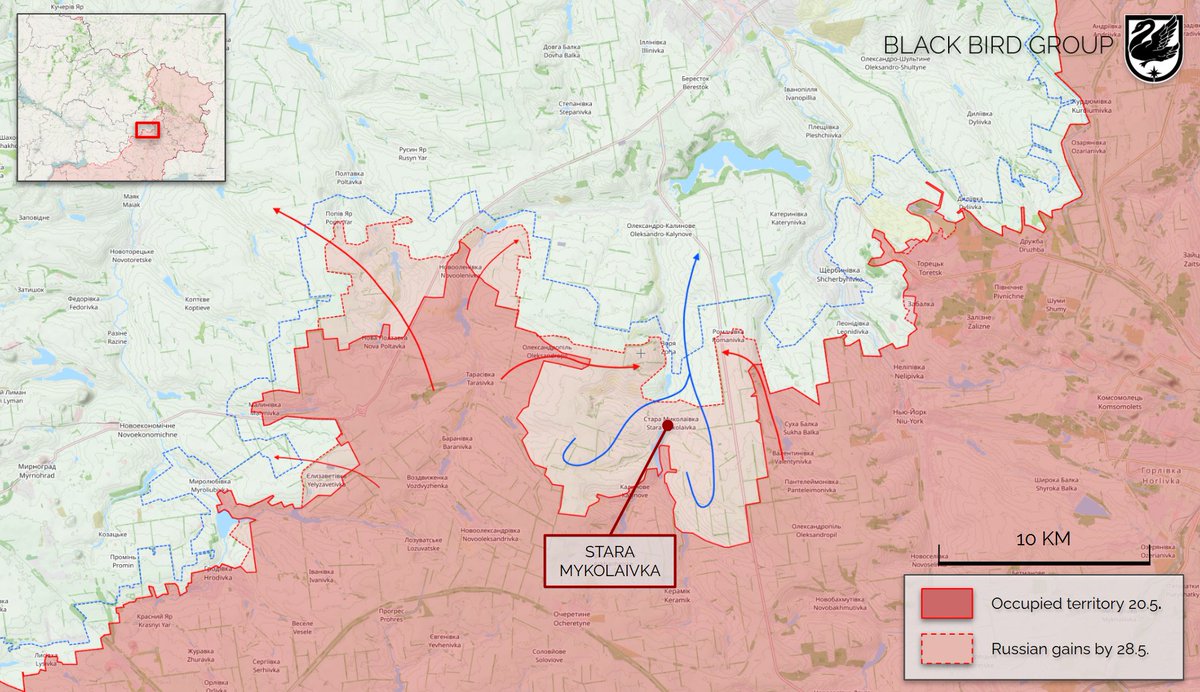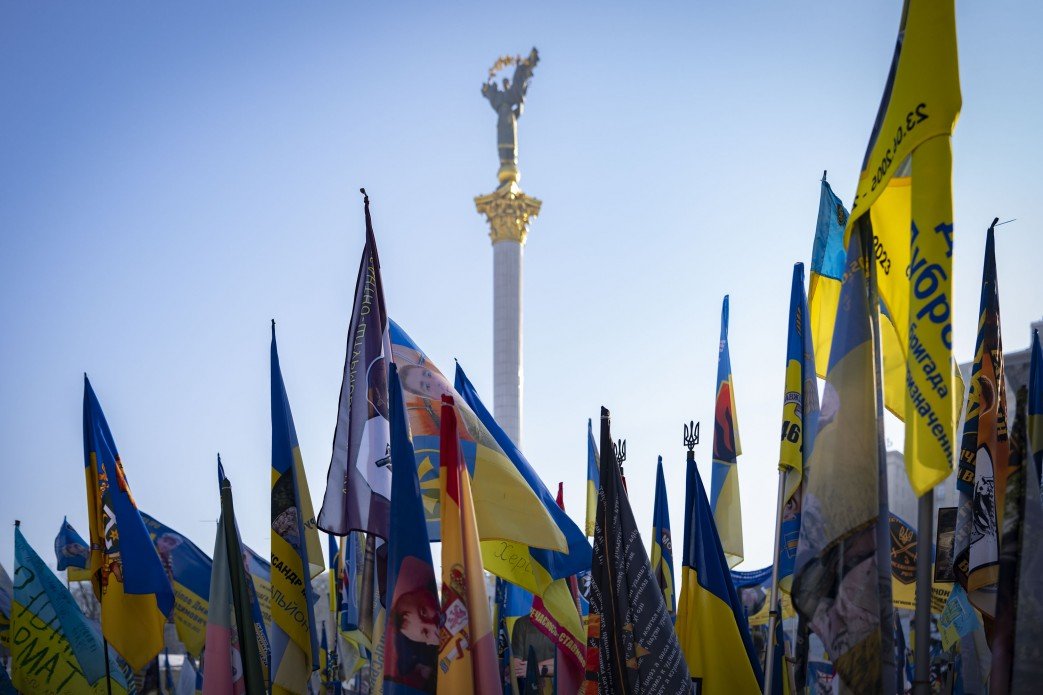During April and May, the Russians formed a dangerous salient against the Ukrainian defenses between Kostiantynivka and Pokrovsk.
The so-called spring offensive has progressed relatively quickly, and serious issues may lie ahead in the near future. 1/
The so-called spring offensive has progressed relatively quickly, and serious issues may lie ahead in the near future. 1/

Defending forces in the area initially consisted of newer, less capable brigades, such as the 142nd, 155th & 157th. Elements from other units were also present. Reserves have been brought in – first the 36th marine brigade, and now the 82nd air assault brigade, among others. 2/
Russia's probable operational objectives for the coming months in the area include:
Formation of an encirclement threat around Kostiantynivka
Formation of an encirclement threat around Pokrovsk
Disruption of Ukrainian supply & command elements in the cities in the AO 3/
Formation of an encirclement threat around Kostiantynivka
Formation of an encirclement threat around Pokrovsk
Disruption of Ukrainian supply & command elements in the cities in the AO 3/

In the latest development, Ukrainians retreated from Stara Mykolaivka. This enables the Russians to continue north towards Kostiantynivka, while also undermining the long-standing defences in Shcherbynivka. However, the fight here seemingly brought Ukrainians some time. 4/ 

The most endangered area is Kostiantynivka. The Russians are attacking from three directions – Chasiv Yar, Toretsk and also from the new salient west of the city. The attacks in Chasiv Yar and Toretsk have not made much progress in recent months. 5/ 

Despite the gradual advancement east and south from the city, developments on the western flank present potential new opportunities for Russian forces. They are positioned approximately 13-15 kilometers from Kostiantynivka and maintain adequate reserves for further operations. 6/
Russians have not achieved a breakthrough in the true sense of the word. An actual breakthrough would entail a rapid collapse of defences, enabling mechanized units to exploit the situation and penetrate deeply into the defender's rear. This scenario isn’t currently unfolding. 7/
The Russians have pushed through an area of dense Ukrainian fortifications. Soon they may reach a less-prepared area, where the Ukrainians can’t bring engineering equipment in safely anymore. However, fortifications don’t solely determine the future of the offensive. 8/
For Ukraine, timely withdrawals from unfavorable positions and careful management of reserves are key elements for a successful defence this summer. The tendency of holding onto nearly encircled pockets usually causes unnecessary losses without significant tactical benefit. 9/
In the worst case scenario, insufficient preparation and bad decisions may lead to a reactive state, where the limited quality reserves are forced to rush from one sector to prevent emerging crises at the expense of another direction, attriting them in the process. 10/
The Russians will likely attack throughout the summer and into the fall with full force, pressuring the Ukrainians on a wide front. The events on the battlefield will also affect the negotiations, which will likely continue in a way or another in the coming months. 11/
Lately I’ve been posting less Ukraine analysis, as I’ve been tied to work, writing my upcoming book and giving interviews (sometimes even multiple per day) to media outlets around the world regarding the actions of the Russian military near our borders here in Finland. 12/
Despite my busy schedule, I continue to closely follow the war in Ukraine. Our team at @Black_BirdGroup is also actively monitoring and analyzing the situation. Don't forget to check our interactive map for daily updates. 13/13
scribblemaps.com/maps/view/The-…
scribblemaps.com/maps/view/The-…
• • •
Missing some Tweet in this thread? You can try to
force a refresh













